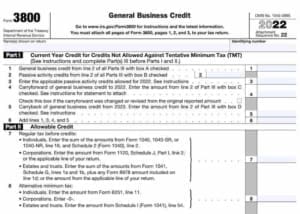Stay Ahead of the Curve: What the BOI Report and Corporate Transparency Act Means for Small Business Owners
Why the BOI Report Matters
As a small business owner, staying compliant with regulations is important to your company’s health. Beyond compliance, understanding the Beneficial Ownership Information (BOI) Report can provide critical insights into your business environment. The BOI Report, mandated by the Corporate Transparency Act (CTA), is designed to increase transparency in business ownership and fight financial crimes. If you’re unaware of this new filing requirement, you could face costly fines—and miss out on valuable insights that can shape your business strategy.
Let’s break down the BOI Report, why it matters, and how it can impact your small business.
The Corporate Transparency Act (CTA) and What It Means for Your Business
The Corporate Transparency Act (CTA) is the legislation that brought the BOI filing requirements into effect. Its primary goal? Combating fraud, money laundering, and other illicit activities by requiring businesses to disclose their beneficial ownership information. If you own a small business, this likely applies to you.
Who Needs to File? Most businesses, including corporations and LLCs, must file under the Corporate Transparency Act (CTA). If your company has fewer than 20 full-time employees, you are likely required to file. However, certain entities, such as publicly traded companies and large operating companies with more than 20 full-time employees and over $5 million in revenue, are exempt.
For small business owners, it’s crucial to check if your company meets the filing requirements to avoid potential fines and penalties.
Exceptions:
Certain entities are exempt from the filing requirements under the CTA. These include:
- Sole Proprietorships: Sole proprietorships only need to file a BOI report if they have formed a corporation, LLC, or other formal legal structure that requires filing.
- 501(c)(3) Non-Profit Organizations: Non-profit organizations that are classified under 501(c)(3) of the Internal Revenue Code are exempt from filing a BOI report. These organizations are already subject to other forms of transparency and oversight.
- Publicly Traded Companies: Since they already report ownership details to the Securities and Exchange Commission (SEC), they are not required to file a BOI report.
- Large Operating Companies: Any company with over 20 full-time U.S. employees, over $5 million in gross annual revenue, and a physical presence in the U.S. is exempt.
- Certain Regulated Entities: Banks, credit unions, insurance companies, and other entities already subject to federal oversight and reporting are typically exempt.
What Are the Deadlines? Filing deadlines are strict, and missing them can lead to penalties. Ensure you know when your business is required to submit its BOI information. Stay on top of updates to ensure compliance.
The filing deadline for the BOI Report under the Corporate Transparency Act (CTA) is January 1, 2025. All reporting entities, including small businesses like LLCs and corporations, must submit their Beneficial Ownership Information (BOI) by this date to remain compliant.
For businesses created after January 1, 2024, the deadline to file their BOI report is within 30 days of their formation or registration.
Meeting these deadlines is crucial to avoid penalties, including fines of up to $500 per day for non-compliance. Review your business’s information and file on time to avoid any issues!
How to File Your BOI Report: A Step-by-Step Guide
Filing your Beneficial Ownership Information (BOI) Report under the Corporate Transparency Act (CTA) is a straightforward process, but it’s essential to follow the steps carefully to ensure compliance. Visit the Financial Crimes Enforcement Network (FinCEN) website to submit your report online. Make sure you have accurate information about your beneficial owners ready before filing.
Need help? Consult a Professional
If you’re unsure about any part of the process, it’s best to consult with a professional such as an accountant or legal advisor. Services like Xendoo can help you stay organized and ensure your business remains compliant.
New Penalties for Non-Compliance: Don’t Risk Hefty Fines
Filing your BOI report isn’t just a formality—it’s a legal requirement. Businesses that fail to file or provide inaccurate information could face severe penalties:
- Civil Penalties: $500 per day for each day your business is non-compliant.
- Criminal Penalties: For willfully providing false information, you can face up to $10,000 in fines or imprisonment for up to two years.
These penalties can hurt your bottom line and your company’s reputation. Staying compliant is not just about avoiding fines—it’s about protecting your business and maintaining operational stability.
Action Step: Consult your bookkeeper or accountant to ensure your filings are accurate and timely.
Stay Compliant and In The Know: Key Insights from the Latest BOI Report
Beyond compliance, the BOI Report provides essential insights into economic and business trends. These insights can help you steer your company in the right direction. Here are some key areas to focus on:
- Economic Trends Impacting Small Businesses: From inflation to shifts in consumer behavior, the BOI Report highlights trends that could affect your strategy. For example, supply chain disruptions might signal a need to diversify suppliers or streamline operations.
- Growth Opportunities: Certain sectors are experiencing rapid growth. For instance, e-commerce and healthcare have seen significant expansion. Use this data to explore new markets and make informed decisions about where to invest.
- Risks to Watch Out For The report identifies potential risks, such as regulatory changes or economic downturns. Being proactive in addressing these risks can protect your business from unexpected challenges.
How to Use the BOI Report to Make Smarter Business Decisions
You can leverage the BOI Report to improve several aspects of your business. Here’s how:
- Financial Planning: Use the report’s data to refine your cash flow management and adjust your financial forecasts. Understanding broader economic trends can help you make more informed pricing, spending, and investment decisions.
- Business Development: The BOI Report offers insights to guide customer acquisition strategies. For example, if a particular sector is experiencing growth, you can focus your marketing efforts there.
Preparing for the Next Filing Deadline
Now that you understand the significance of the BOI Report and the CTA, it’s time to prepare for the next filing deadline. Here’s what you should do:
- What to Do Next: Review your current filing processes. Ensure your BOI information is up-to-date and you’re meeting all requirements under the CTA.
- Tools & Resources: Stay organized using bookkeeping and account services like Xendoo, which can help you streamline your financial operations and ensure compliance with the Corporate Transparency Act. Other helpful tools include QuickBooks and Xero for managing your financial records, ADP for tracking legal compliance and payroll filings, and Dropbox or Google Drive for organizing essential documents and ownership information. Small business owners often struggle with the administrative burden of filing reports, so outsourcing to trusted professionals or using these tools can save you time and reduce stress.
Empower Your Business with BOI Report and CTA Compliance
By staying compliant with the Corporate Transparency Act, you’re not only avoiding fines but positioning your company to thrive in a competitive market.
Key Takeaways for Small Business Owners:
- New Filing Requirements: Don’t ignore the deadlines—failing to file can cost you financially.
- Economic Trends: Use the BOI Report’s insights to refine your strategy.
- Growth Opportunities: Identify sectors where your business can expand.
- Risk Management: Be proactive in addressing regulatory changes and market risks.
Stay informed. Stay compliant. And use the data at your fingertips to make your small business stronger.
Need help filing? Let us take this off your plate. Contact our tax experts for more information on filing.














